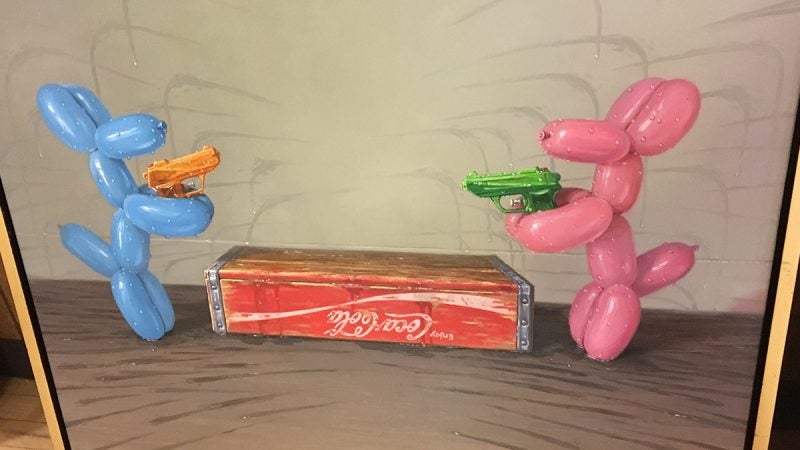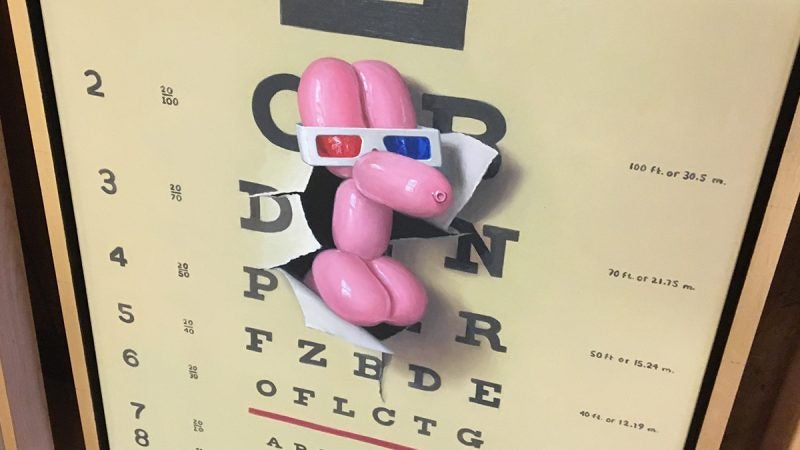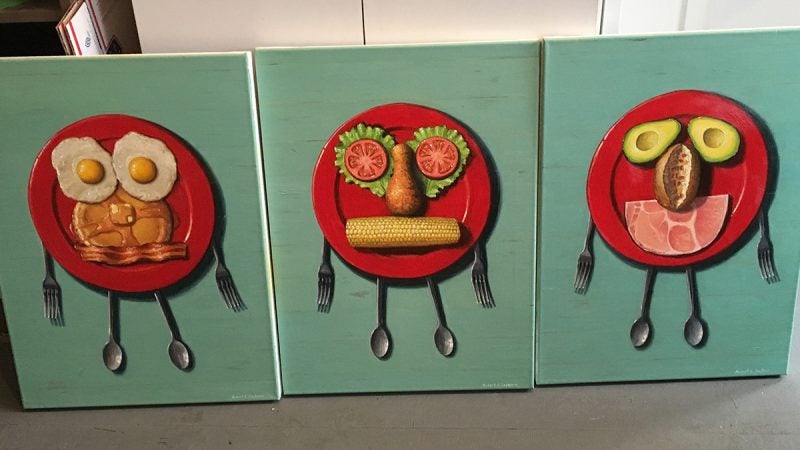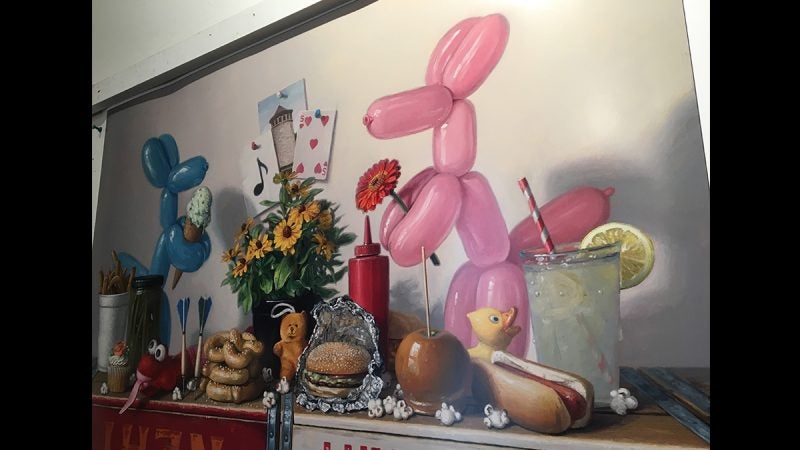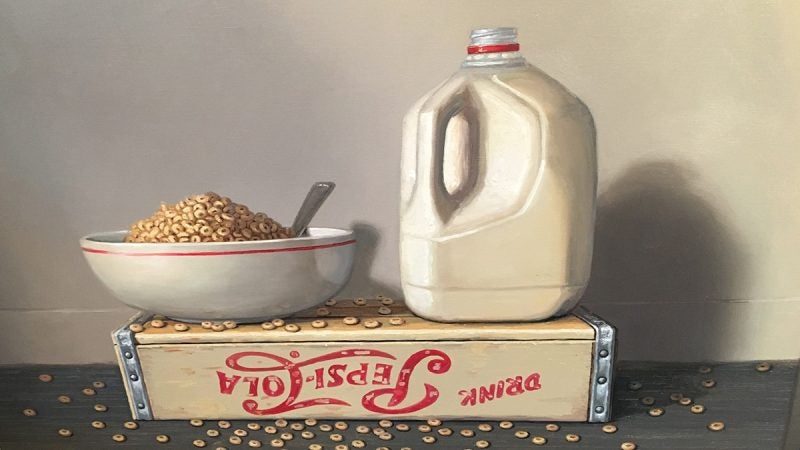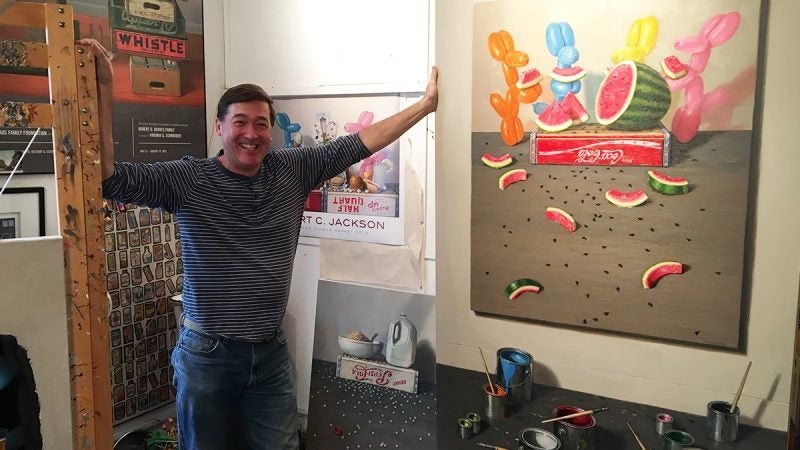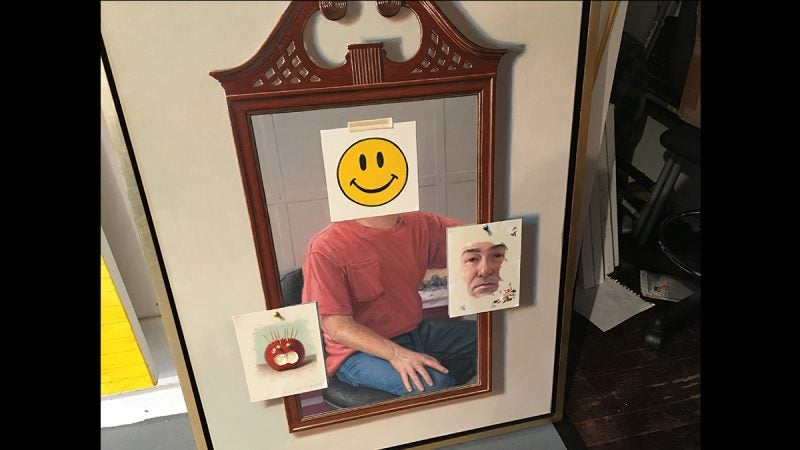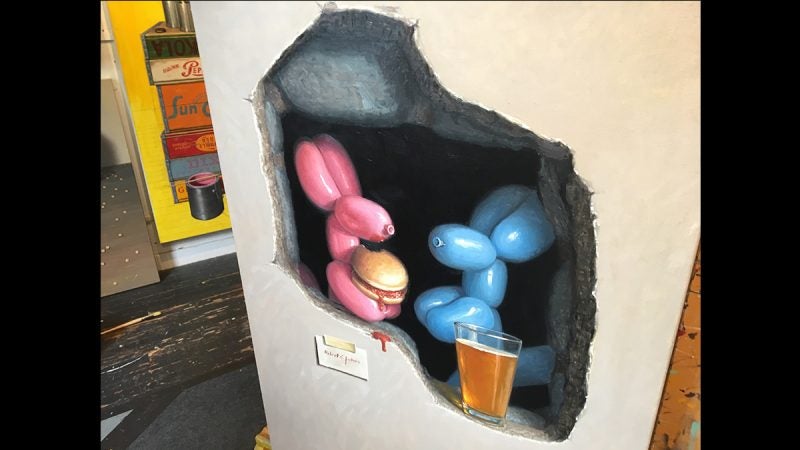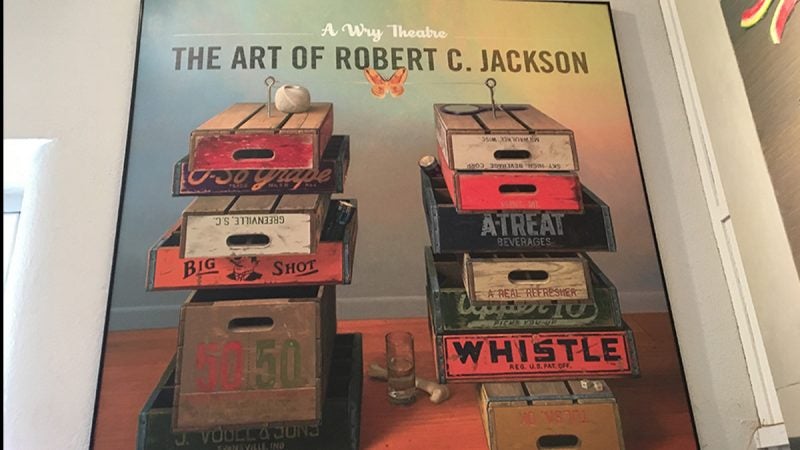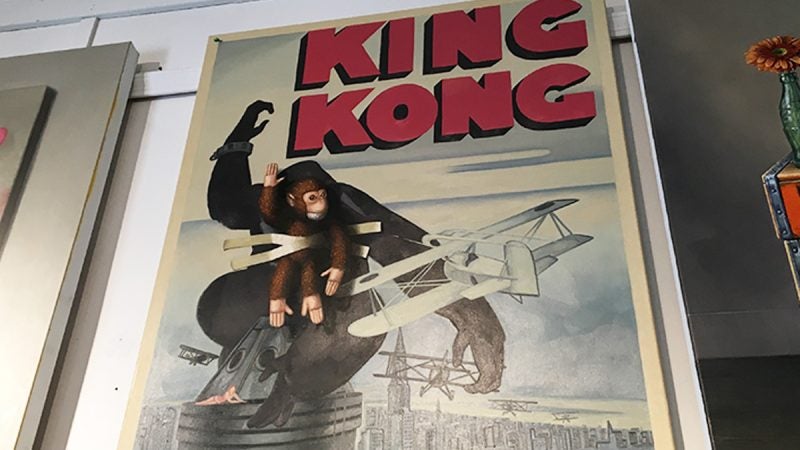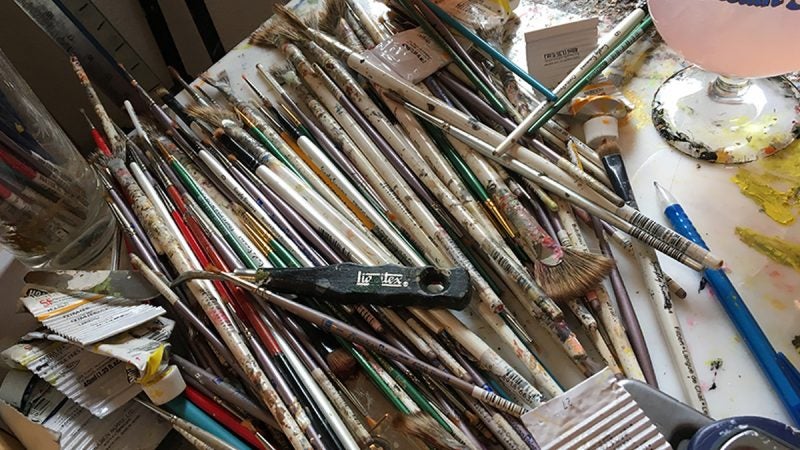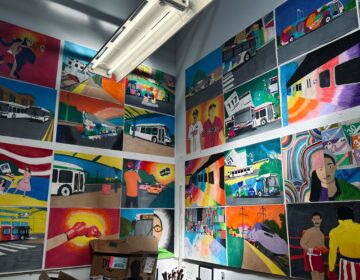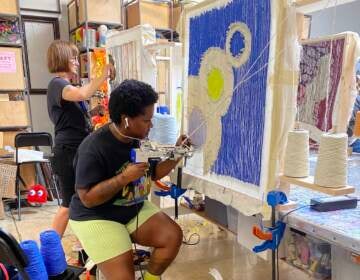Artist finds still life is more than just bowls and flowers
For Robert Jackson, still life became a boring subject to paint. He wanted to be different and with the help of balloon dogs and childhood memories, he achieved his goal.
Robert Jackson wasn’t always an artist. In fact, he studied to be an electrical engineer, but a gift from his girlfriend changed all of that.
During his senior year attending the University of Delaware, his girlfriend at the time saw that Jackson doodled in his engineering notebooks. She thought he had talent and gave him a set of oil paints for Christmas.
“I thought, ‘what do you do with oil paints?’ I had no idea, they’re messy, they’re gooey,” Jackson said. He chose painting 101 as an elective that year. “I had a throw away elective and I took a painting 101 class from a guy many people know as Robert Straight.” That class changed everything. “I went, ‘wow, I like this better than any course I took in college,’ so that set me up.”
Jackson graduated- and even though he now loved art- he didn’t make a career out of it, at first. “I fell in love with painting, knew I wanted to do it, but I had an engineering job lined up that paid a lot better than being an artist, so I took it.”
Jackson continued to paint in his spare time. “Still-life was something I could set-up, especially back than, come home from an engineering job, you could set up a still life and paint it.” However, Jackson continued to work for the next five years as an engineer.
“It was right out of that movie Office Space, if you remember that. I had the cubicle and I just thought, I can’t do this for my whole life.” Not wanting to wait to paint until after retirement, Jackson quit his job and began painting. “It was very freeing to quit and say I want to be an artist.”
As he continued to evolve in his painting he realized that still-life can be very boring. “There’s only so many bowls and flowers you can do, and my still life, I started making it more active.” Jackson began putting more of his personality and thoughts into the paintings. Along with his personality he mixed in lots of pop culture and childhood memories. Childhood toys, breakfast cereal, cookies and even his toy monkey became the subjects of his paintings.
The monkey, balloon dogs and soda crates
Jackson’s studio is dotted with shelves that contain many of the elements that make it into his paintings. One particular item sits on a shelf above the entrance, a little stuffed monkey.

“That little monkey was my childhood monkey I had and I loved,” Jackson said. He put him in the studio, but every once in a while he looks at the monkey and thinks, “Oh, he’s so lonely. I used to play with him as a kid, now he’s lonely. So every once in a while he’ll show up in a painting.”
One of those paintings you can see in the video and picture slideshow accompanying this story. It depicts King Kong as he famously sits atop the Empire State Building, but as with all of Jackson’s paintings, there’s a twist. As you can see, the stuffed monkey is the star of the painting instead of the iconic Kong. “That’s elevating him back to how I perceived him as a child, its kind of fun.”
Another fun element in Jackson’s paintings are his use of dog-shaped balloon animals. They can be seen doing everything from eating food to shooting at one another with water pistols. “Every kid lines up to get a balloon dog twisted for them and I thought these things let me make still-life with personality.”

Many different pop culture items and things you may have grown up with make it into Jackson’s paintings. Oreos and breakfast cereal, 3-D glasses (usually worn by the balloon dogs), even a plate of oysters. One other interesting thing that frequently reappear are soda crates. These give Jackson another way of turning still-life on its ears.
“Traditional still-life people think of as a table. There’s a table with some objects sitting on it, and I thought how do I become different.” That’s where the crates come in. They come in all sizes and colors, often with the name of the soft drink brand emblazoned on the side, allowing Jackson to incorporate text and other meaning into his works.
“I remember finding one of these soda crates in an antique shop and I’m thinking ‘wow, there’s American nostalgia, it’s got color, it’s got wiz-bang.’” Jackson began collecting them and you can see most of the collection in the pictures below. He says they date from about the 1930s – 1970s.
Jackson continues to come up with new ideas and concepts for his paintings. “I love creating, I love making this stuff.”
And he really loves the idea that someone out there will see one of his pieces and want to part with their hard earned money to “live with” one of his paintings.
“I think that’s pretty cool.”
WHYY is your source for fact-based, in-depth journalism and information. As a nonprofit organization, we rely on financial support from readers like you. Please give today.







